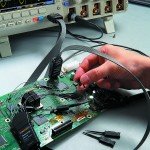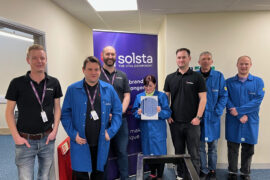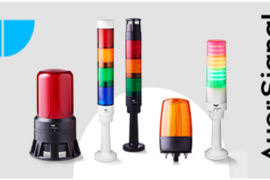Mixed-signal oscilloscope family offers logic debug capabilities
 Now available from TTi Instrument Distribution are a number of new models in the Tektronix MSO2000 Series of mixed-signal oscilloscopes, offering advanced logic debug features at an entry-level price.
Now available from TTi Instrument Distribution are a number of new models in the Tektronix MSO2000 Series of mixed-signal oscilloscopes, offering advanced logic debug features at an entry-level price.
With up to 200 MHz bandwidth and 1 GS/s sample rate, the instruments incorporate up to 20 channels for analysing both analogue and digital signals, allowing users to quickly find and diagnose problems in complex designs. To capture long windows of signal activity while maintaining fine timing resolution, the MSO2000 Series offers a deep record length of one million points as standard on all channels.
With Wave Inspector(R) controls for rapid waveform navigation and automated serial and parallel bus analysis, the MSO2000 provides a feature-rich set of tools to speed and simplify the debugging of complex designs.
The 16 digital channels are tightly integrated into the oscilloscope’s user interface, simplifying operation and making it possible to solve mixed-signal issues easily.
One common challenge shared by both logic analysers and mixed-signal oscilloscopes is determining if data is a ‘one’ or a ‘zero’ when the display is zoomed in so far that the digital trace stays flat all the way across the display. The MSO2000 Series addresses this issue by using colour-coded digital traces, displaying ‘ones’ in green and ‘zeros’ in blue.
The multiple transition detection hardware shows a white edge on the display when the system detects multiple transitions. This acts as a visual reminder that increasing the sample rate on the next acquisition will reveal higher-frequency information than the previous settings could acquire.
The MSO2000 Series simplifies channel setup by allowing the user to group digital waveforms and enter waveform labels via a USB keyboard. Digital waveforms are simply placed next to each other to form a group, and all the channels contained in that group can then be positioned collectively. This greatly reduces the normal setup time associated with the positioning of channels individually.
An advanced probe design incorporates two eight-channel pods, which greatly simplifies the process of connecting to the device under test. When connecting to square pins, the P6316 probe can connect directly to 8 × 2 square pin headers spaced on 0.1-inch centres. When more attachment flexibility is required, flying lead sets and grabbers (also included as standard) can be used to clip onto surface mount devices or test points. The P6316 probe offers outstanding electrical characteristics, applying only 8 pF of capacitive loading with 101 kilohm input impedance.







Comments are closed.